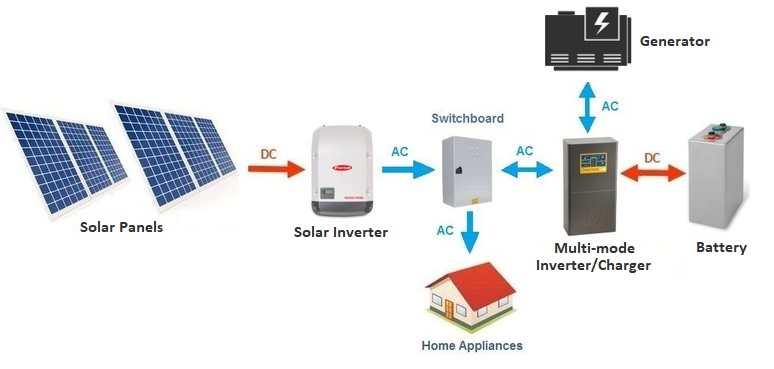A complete residential solar system design for home requires some essential components to produce efficient electricity. These components convert power into oscillating current that can be used by home appliances; stores excess generated electricity and maintains safety. In this blog we have enlisted the most essential components required for residential solar system.
Solar Panels
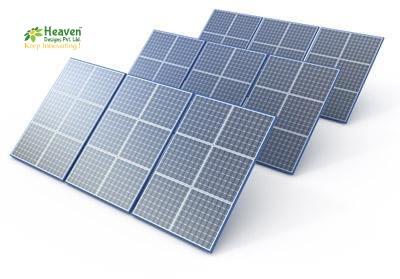
The solar panels are the most essential and noticeable component of a residential solar system. Firstly, the solar PV design is made in accordance to the solar panels to be installed outside the home. Typically on the roof to capture maximum solar light for producing maximum electricity. The photovoltaic effect is the process of converting solar energy into electricity. This process gives solar panels their another name, PV panels. Solar panels gives output ratings which are in watts. This rating defines the maximum energy produced by the panel under the ideal conditions. Output per panel is generally between 10 to 300 watts, with 100 watts being a common configuration.
Solar Array Mounting Racks
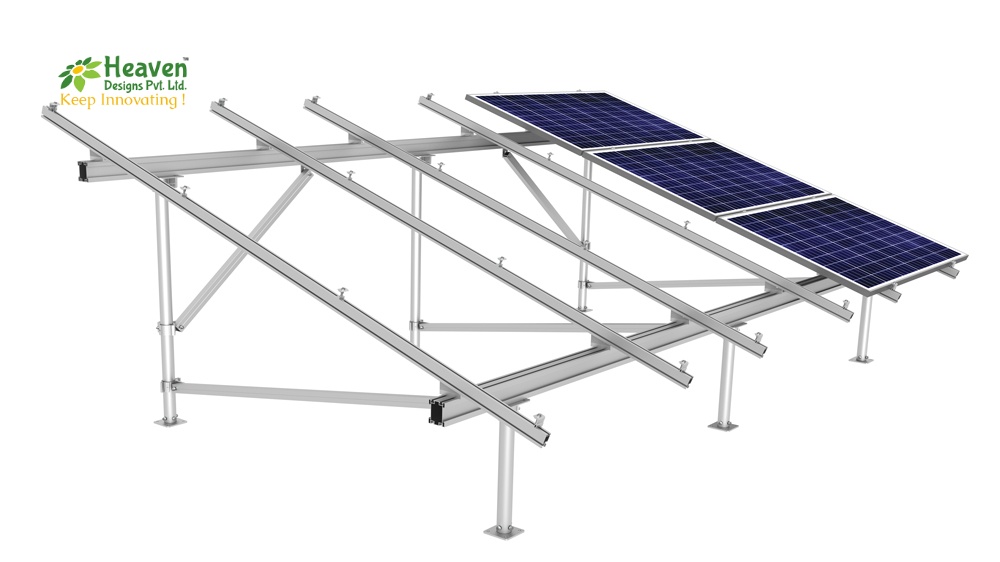
Secondly, solar panels are joined into arrays. Generally mounted in one of the following three ways:
-On Roofs
-On Poles In Free Standing Arrays
-Directly On The Ground
Roof Mounted Systems– These are the most common mounting systems which may be required by zoning ordinances. The approach towards roof mounted systems is aesthetic and efficient. The main drawback of roof mounting is maintenance. For high roofs, repairing the systems can be an issue. However an efficient solar structure design will be capable enough to deal with such situations.
Free Standing, Pole Mounted Arrays –This type of mounting racks can be set at enough height which helps in the maintenance process. The advantage of easy maintenance should be weighed against the extra space required for the arrays.
Ground Systems – These systems are low and simple, but are not suitable for the areas with regular accumulations of snow. Space is also a matter of high consideration with these array mounts.
Thirdly, since the angle of the sun changes continuously throughout the year, the height and angle of fixed mount arrays are a compromise that trades optimum angle for a less expensive, less complex installation. The solution to all the above leads to the invention of an excellent auto-tracking solar panel. It is a device that helps in pushing the solar panel in the directions where the intensity of sunlight is the maximum. These tracking devices include many controllers like PLC, Arduinofor small-scale solar projects or AVR microcontrollers.
Array DC Disconnect
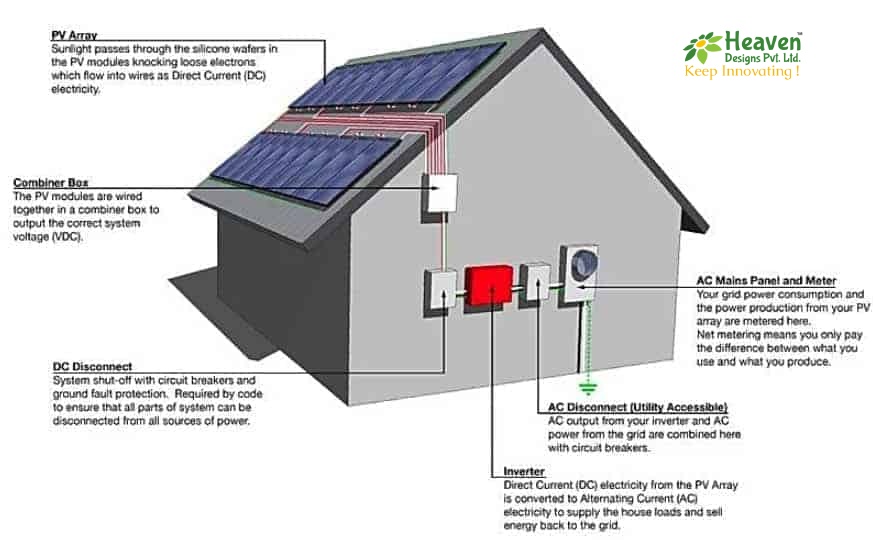
The Array DC disconnect is used in the solar system to disconnect the solar arrays from the house for maintenance purposes. It is called a DC disconnect as the solar arrays produce DC (direct current) power.
Inverter
Solar panels as well as batteries produce DC (direct current) power whereas, standard home appliances use AC (alternating current). An inverter converts the direct current power produced by the solar panels and the batteries into the AC power required by home appliances.
Battery Pack
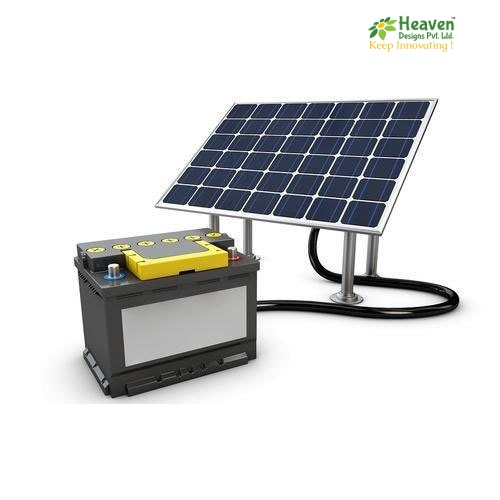
Solar power systems produce electricity throughout the daytime, when the sun is shining. A home demands electricity both at day and night as well as on cloudy days – when the sun isn’t shining. A battery pack added to the system can fulfill the non-generation gap time with storage and continuous supply.
Power Meter
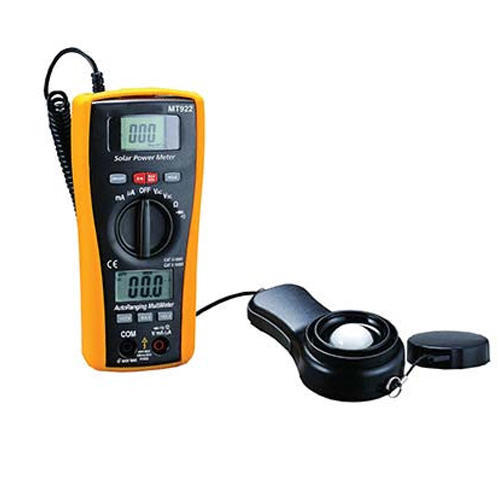
For systems that perpetuate a tie to the utility grid, the power meter measures the exact amount of power used from the grid. These systems are send power to the utility; however, the power meter also helps in measuring the amount of power the solar system sends to the grid.
Backup Generator

For those systems which are not tied to the utility grid, a backup generator is generally used to provide power during the periods of low solar system output due to poor weather conditions or high household and additional demand. Homeowners who are concerned with the environmental impact of these generators can still go for installing a generator that runs on alternative fuel such as bio-diesel, rather than gasoline.
Breaker Panel, AC Panel, Circuit Breaker Panel

A circuit is a perpetual route of connected wire that joins together the outlets and lights in the solar electric system. For each circuit there is a circuit breaker that prevents the appliances on a circuit from drawing too much of electricity that may lead to a fire hazard. However, when the appliances on a circuit start demanding too much electricity, the circuit breaker will immediately switch off or trip, interrupting the on-going flow of electricity.
Charge Controller
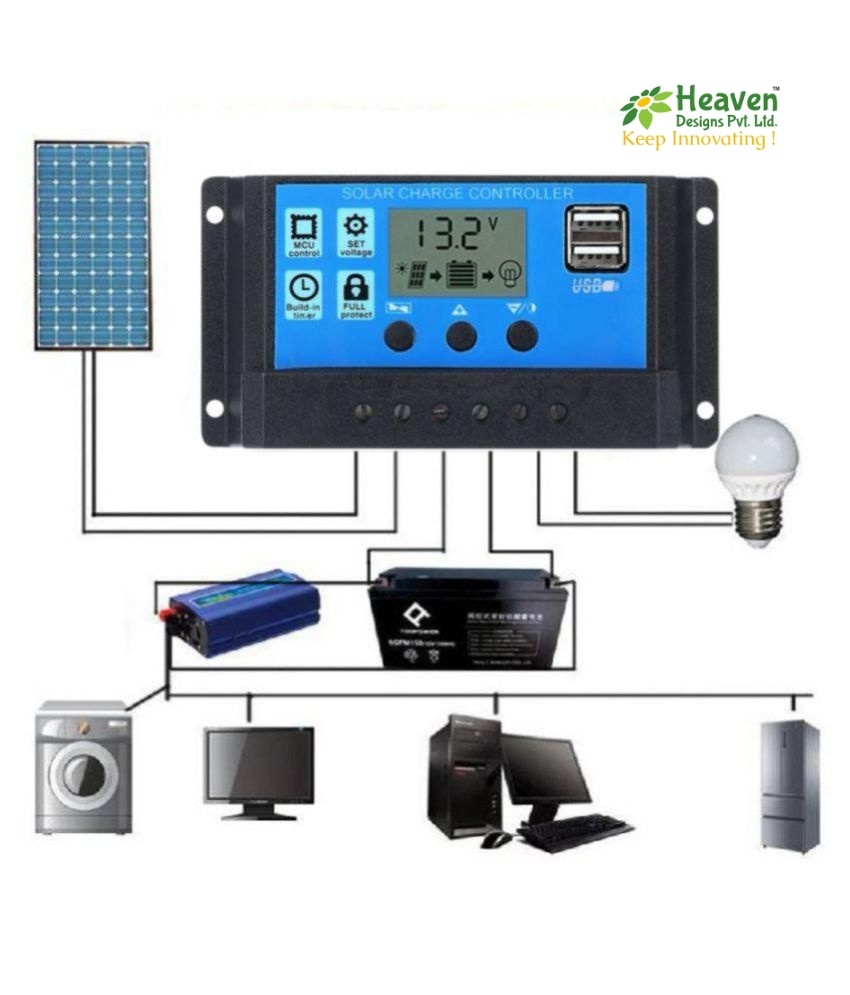
Lastly, the charge controller,also known as charge regulator helps in maintaining the proper charging voltage for system batteries. When batteries are fed with continuous voltage overcharge them. The charge controller helps in regulating the voltage as well as prevents overcharging by allowing charging when required.
Heaven Designs, being one of the best solar consultancy service providers feels it obligatory for ourselves to educate the solar businesses, EPC and emerging solar contractors of all scales with solar insights. To know more stay tuned with us!
Register On Our Online Design Portal:
To grow your solar business effectively, we have developed online software, where you can create, monitor & track your design project any time.
Follow These Simple Steps-
-Site visit form included and mobile-friendly portal
-Track each project design on the dashboard
-You can also Add your team and provide them the user ID and password
-Upload site visit data or project name
-Download complete design in one go- https://app.heavendesigns.in
Download Our Official Mobile Application ‘Solar Design Solution’ & Get Your Solar Projects In Your Hand.
Connect With Us:
Website: Email:
Email: 
Follow Us On:





